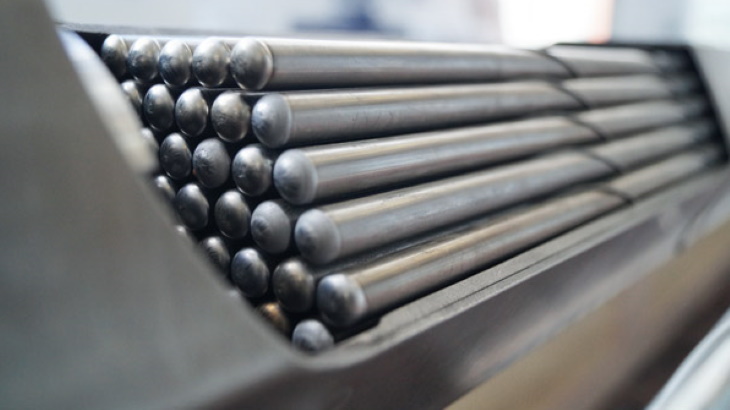Experimental fuel elements and fuel assemblies are being tested in the BN-600 fast reactor at the Beloyarsk nuclear power plant to obtain the most complete experimental data on the properties and behaviour of pellet-form MNUP fuel in steel cladding. The data will serve to validate the fuel element design, which will be used for the manufacture of fuel rods for the BREST-OD-300 lead-cooled fast neutron reactor. BREST-OD-300 is part of the pilot energy complex (ODEK) in Seversk.
Irradiation of experimental fuel assemblies began in the spring of 2014. They were used in the reactor until the autumn of 2016 and their use for research has now been completed. All the fuel rods retained their original shape during irradiation and no structural element defects were identified, SCC said.
In the spring of this year, new batches of experimental fuel assemblies were loaded into the reactor and each one contained 61 fuel rods.
"Tests of the innovative MNUP fuel are continuing successfully. More than 21 experimental assemblies were irradiated directly in the BN-600 reactor and the serviceability of this fuel has been proven," Yuri Mochalov, chief technologist of the Breakthrough project, said.
The Breakthrough project aims to demonstrate a closed fuel cycle. SCC is part of fuel company TVEL, which is a subsidiary of state nuclear corporation Rosatom.





_23621.jpg)

_63865.jpg)
_18570.jpg)





